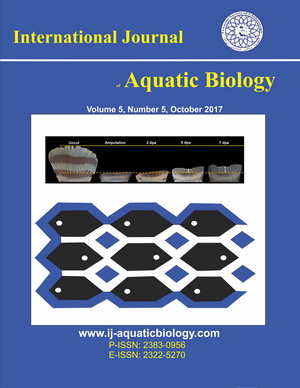Effects of aquatic plants on reducing salinity and cation concentrations in different types of water
Downloads
The efficiency of some aquatic plants, i.e., Azolla filicoides, Ceratophyllum demersum, and Lemna minor, in reducing electrical conductivity (ECs) and some cations were studied in a laboratory experiment with three filter sizes (300, 400, and 500 cm³) for each plant and type of water. Two sources of water samples were collected: Shatt al-Arab (EC 7 dS m-1) and Shatt al-Basrah water, collected on October 5, 2022 (EC 60 dS m-1), and February 20, 2022 (EC 43 dS m-1 adjusted to 20 dS m-1), respectively. Filtered water was kept in plastic containers while the EC and cations reduction efficiencies were calculated. Based on the results, Azolla had the highest reduction efficiency among the filters, followed by Ceratophyllum and duckweed for the filter size equal to 500 cm³. The other filter sizes were less efficient than those with a volume equal to 500 cm³ or greater. The different sizes showed varying abilities in reduction, all less than those of the 500 cm³ size.
Downloads
Al-Hamdaoui R.M.N. (2021). The effect of covering and adding amendments on some properties of sandy soil and its susceptibility to erosion and their impact on the growth parameters of maize (Zea mays L.) under drip irrigation system. Master's Thesis, University of Basra, College of Agriculture. (in Arabic) 132 p.
Al-Zubaie A.R.Y., Al-Nuaimi W.S. (2009). Effect of using fuel oil and aqueous Ceratophyllum demersum powder on some physical properties of soil and pea yield under rainfed conditions in Ramadi City. Iraqi Journal of Agricultural Sciences, 40(4): 51-62. (in Arabic)
Salman N.F. (2017). The role of some plant residues in reducing water pollution and changing some soil properties and wheat growth (Triticum aestivum L.) irrigated with polluted water. Master's Thesis, College of Agriculture, University of Basra (in Arabic). 120 p.
Al-Zubaidi A.H. (1980). Cation exchange characteristic of alluvial soil of Iraq. Journal of Agricultural Science, 15: 60-77. (in Arabic)
Buffle J. (1988). Complexation reactions in aquatic systems. An analytical approach. John Willey and Sons. New York.
El-Baz A.A.A., Hendy I.A., Dohdoh A.M., Srour M.I. (2020) Adsorption technique for pollutants removal, current new trends and future challenges–A Review. Egypt International Journal of Engineering Sciences and Technology, 32: 1–24.
FAO (1999). Duckweed: a tiny aquatic plant with enormous potential for agriculture and environmental. FAO publications. Rome, Italy.
Hashem F.A., El-Maghraby S.E., Wassif M.M. (1997). Efficiency of organic manure and residual sulphur under saline irrigation water and calcareous soil conditions. Egyptian Journal of Soil Science, 37(4): 451-465. ?
Henderson R.W., Lightsey G.R., Poonawala N.A. (1977). Competitive adsorption of metal ion from solution by low-cost organic material. Bulletin of Environmental Contamination and Toxicology, 18: 340-344.
Ingole N.W., Bhole A.G. (2003). Removal of heavy metal from aqueous solution by water hyacinth (Eichornia Crassepes). Journal of Water Supply: Research and Technology. AQUA, 52(2): 119-128.
Materac M., Sobiecka E. (2017). The efficiency of macrophytes for heavy removal from water. Biotechnology and Food Science, 81(1): 35-40.
Malash N., Flowers T.J., Ragab R. (2005). Effect of irrigation systems and water management practices using saline and non-saline water on tomato production. Agricultural water management, 78: 25-38.
Senesi N. (1992). Metal-Humic substance complexes in the environment Molecular and Mechanistic aspects by multiple approaches. Lewis Pub. Co., New York.
Copyright (c) 2024 International Journal of Aquatic Biology

This work is licensed under a Creative Commons Attribution 4.0 International License.








